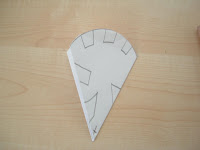



Timetables are the most effective tool to help embed structure into the day. The primary purpose in providing this structure is to enable the autistic person the means to make sense of their day and eventually, to give him the means to accept change to the routine.
Initially, keeping a routine so that you can alter it seems contradictory, but it's not the events or activities on the timetable that become the "routine" but rather the act of following the timetable itself.
Timetables come in a variety of formats and are used on an individual or class basis, but I prefer individual ones that utilise velcro. Individual timetables allow the pupil to take ownership of the timetable and are useful for when the child is in a different part of the school. As well, when the child is "stuck", having the timetable ready to hand, makes aiding the transition much easier.
Each pupil in my class had two timetables, one for the morning (blue) and the other for the afternoon (red).Four of the boys used timetables with symbols and one boy's timetable was a series of photographs in a photo album.
As each activitiy finished, the symbol would be flipped over, so the boy could realise he was finished it and move on to the next activity. By the end of the day all of the symbols would be flipped over, and the boys would be ready to catch their taxis home.
















